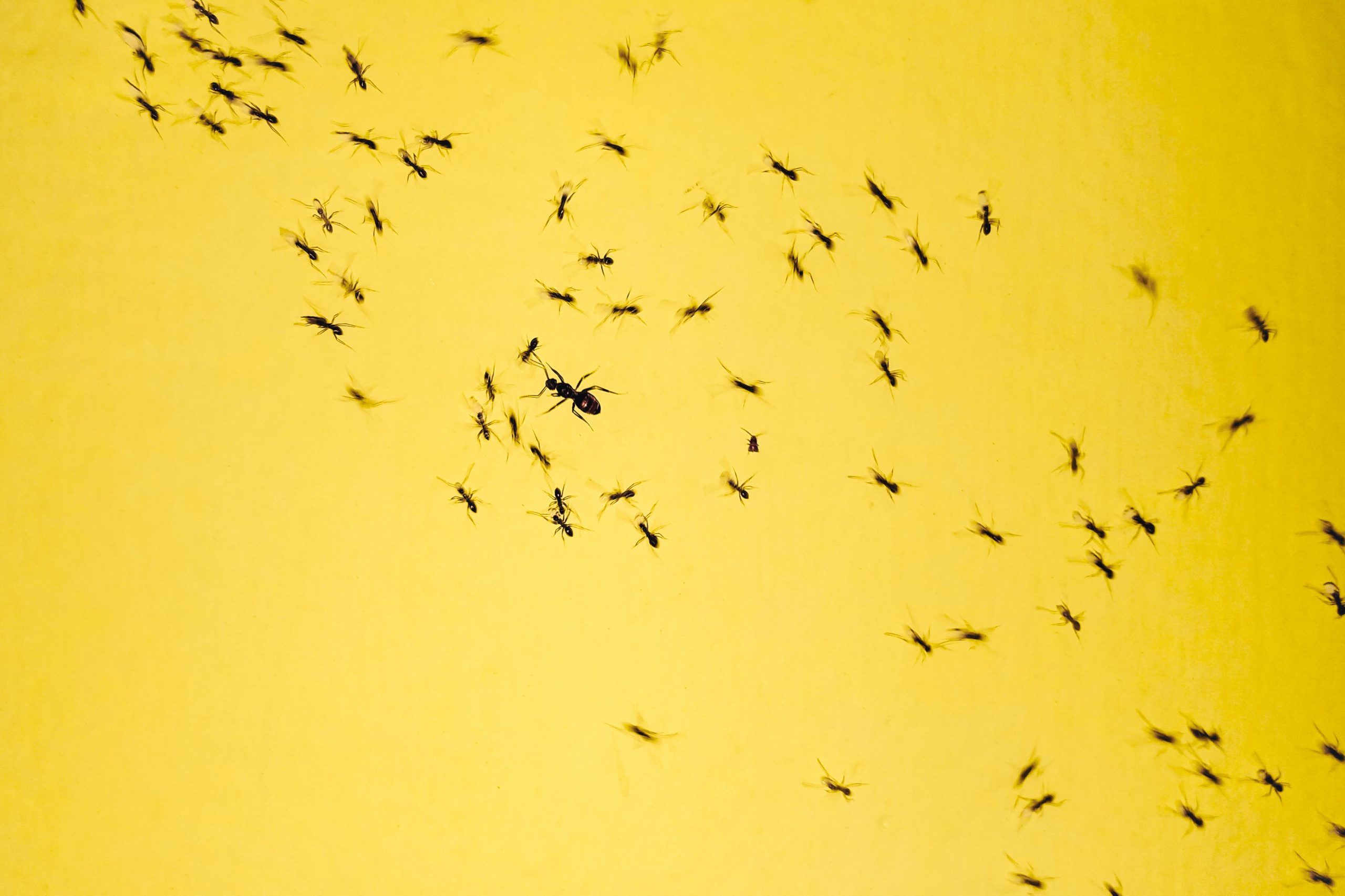How to increase indoor air quality in mobile and manufactured homes
How to increase indoor air quality in mobile and manufactured homes
No matter where you go in the US, there are mobile and manufactured homes. The homes we’ll discuss here can fall into 2 categories: homes that were moved from a tractor trailer, placed on pilings and realistically will never move again, and then there are recreational vehicles (RVs) that can travel the country (but many sit at home or in storage for most of the year). There’s also vastly different reasons to live in one or the other–from financial to lifestyle choices to temporary housing. Whatever your reason to stay in a mobile or manufactured home, we want to help you make it a healthy place.
Mobile homes with a pier foundation are actually supposed to be called “manufactured homes” according to the industry representative, The Manufactured Housing Institute. Mobile homes and manufactured homes are two words for the same thing: a home built in a factory on a steel frame with wheels for transport to a homesite, where the wheels are removed after it is set on a foundation. Manufacturers and HUD prefer that they be called manufactured homes, but most people still refer to them as mobile homes. You can have single-wide, double-wide, triple and even quadruple-wide “mobile” homes, where the extra “boxes” can be configured side by side or even on top for a second story. Mobile homes don’t have a great reputation for quality or lifespan, but that doesn’t mean they don’t start out that way or can’t be upgraded to make them better. Let’s discuss the ways in which mobile homes can be improved for healthier indoor air quality. The main objective is to keep water out, seal air leaks and provide good ventilation. (source: howtolookatahouse.com)
Starting from the top down…The roof: generally speaking, less-expensive manufactured homes have flatter roofs. This is because the higher the “pitch” or angle of the roof, more material is necessary to frame and cover it. The problem with low pitch roofs is that rain and debris spends more time on the roof–rain doesn’t run off as quickly and debris like tree branches and pine needles don’t roll off as easily. Roofs in general need inspection and maintenance, and low-pitched roofs need regular inspection to keep water from getting backed up and leaking through. Many owners decide to “double-roof” their homes and this can make a huge difference in indoor temperature and longevity of the home. I’m not talking about
Roof overhangs tend to be short in manufactured homes, so that water coming off the roof runs right down the wall. This is a recipe for water intrusion and mold, not to mention undermining the footings of the piers. If the home does not have gutters, you can install gutters and downspouts to channel the water away from walls, doors, windows, decks and the foundation.
Siding is the protection for walls against wind and rain, and siding can be metal (very old homes), fiberboard (80’s and 90’s homes) or vinyl, engineered wood or hardyboard (modern homes). Fiberboard must be continually maintained, or water ingress will cause it to degrade quickly. Vinyl, engineered wood and cement board sidings provide longer-lasting protection, but they also need to be inspected for damage or improper installation. The weakest points in siding are the corners, window and door casings, because the irregular joints are typically spots for water ingress.
For many years, windows in manufactured homes were single pane with an aluminum frame. The transport of the home to its new foundation may cause the frame to warp or the casing around the window to become unsealed, exposing the sheathing underneath to water. If you are able to, you can upgrade the windows to double-pane for more insulation against outside weather, and make sure the new windows are installed with good flashing, casing, and caulk techniques. Likewise, if the front door is of a thinner, lightweight quality, an upgrade to a steel door is also an opportunity to make sure it is installed correctly with flashing, casing and caulk to minimize water ingress.
Foundation: On manufactured homes that have a “skirt” or foundation, a vapor barrier must be installed on the ground (2008 HUD law). If the home is resting on a concrete pad, then the vapor barrier is not needed because the concrete will act as a vapor barrier. Unfortunately, the “underbelly” of the home often falls into disrepair because no one wants to go under the house to inspect it! Directly under the home, another vapor barrier of plastic or black “belly board” will protect the insulation and subfloor from moisture and pests, but this is often damaged and missing in older homes. Manufactured homes on piers are really sitting over a “crawl space”, so it’s important to inspect the underside of the manufactured home to see how sealing up the ground vapor barrier, belly barrier and insulation can really make a difference in comfort and humidity! Here’s an article that goes step by step through this repair.
Inside: the manufactured home industry has certainly had a bad reputation for formaldehyde emissions inside homes. Formaldehyde has never been banned from the manufacture of homes, but lower limits have been set on the use of components such as plywood and particleboard by HUD and the EPA. The problem is that there are no HUD standards for the maximum allowable level of formaldehyde gas inside a home, meaning that all the new components like flooring, cabinets, walls, furniture and drapery can have low individual levels of emissions, but a high overall level. For this reason, it’s best to avoid purchasing or staying in new manufactured homes, If this is not an option, you can choose to furnish it with only solid wood furniture or composite wood furniture with sealed surfaces. If you have any newer composite wood furniture that is still emitting formaldehyde gas, remove it from your home. Because the formaldehyde off-gassing diminishes over time, storing the pieces outside of your living area for a while (under cover of course) may solve the problem. (howtolookatahouse.com) You can also ventilate as much as possible (leaving windows open in mild climates, and using a fresh-air ventilation system in more extreme climates. And of course, increase ventilation of your home while doing any interior painting or use low VOC paint.
Some of the most important mold protection also happens on the inside of the home, because leaking pipes, sinks, showers, toilets, washing machines, etc. all need immediate attention in order not to cause mold and damage that can be very costly to repair. The abundance of fiberboard in manufactured homes will wick up water much more quickly than hardwood, and even ambient humidity is important to control.
Recreational Vehicles (RV’s or campers) truly are supposed to be mobile, so that you can take your home with you, and enjoy new scenery wherever it’s parked! Like manufactured homes, there are a variety of pricepoints and features in two classes, motorized and towable. There are 3 types of motorized RV’s, ranging from the largest, luxury bus-type (Class A), the smallest conversion van (Class B) to the in-between (Class C). Towable RVs can be as simple as a small “Pop-up” to large “travel-trailers” and “fifth wheels”. “Tiny homes” can look like miniature versions of homes on wheels. Here is a more in-depth look at the differences between these classes.
RVs have similar challenges to manufactured homes when considering water intrusion from above and vapor from below. It’s a sad truth that RVs are going to leak, but with a lot of inspection and maintenance, you can prevent this. Most RV’s rely on sealant and caulking, and inspection and repairs should occur every 90 days (see this video for how to inspect it). Again, let’s take a look from the top down:
Roofs: Most RV roofs are either rubberized (a thin membrane stretched over wooden frame) or fiberglass (molded). Considering that these materials are more fragile than the asphalt shingles or metal roofs found on manufactured homes, they need a bit more care and upkeep! Keeping them clean and conditioned helps so that leaves and branches slide right off instead of piling up, and aftermarket coatings can extend life against the sun’s UV damage. RV roofs can last from 10-20 years or more, depending on the care and maintenance given them. Here is an article detailing cleaning and repair tips for each type of roof. Ideally, RVs should be parked under a permanent roof when they are not being used in order to minimize water and sun damage, and a minimal conditioning system (like a dehumidifier) should be left running to keep the air dry inside.
Since RVs are mobile, they are more prone to separation at the roof and wall joint, as well as openings like skylights, windows and doors. One website says that driving an RV at highway speeds is “ the equivalent of driving your house through a hurricane during an earthquake.” (!) Any separation needs to receive prompt attention by removing old sealant, cleaning the surface, and applying new sealant. Here is a great article on how to achieve a professional look and long-lasting finish when resealing seams. If your RV has a slide-out, special attention needs to be paid to protecting this area, and awnings are a great way to shelter the slide-out roof and joint area by keeping leaf and branch debris, animal droppings and nests off of it, as well as rain and snow. They’re not too hard to install (instructions here) and are a great investment for your RV.
Each penetration in the side of the RV (like vents, ports for electricity and drainage, and storage compartments) needs attention, because sealants fail over time and with sun damage. They should have a bead of sealant at least on the top and corners of the penetration to prevent water from coming in (the best would be all around the penetration).
The underbelly (underside) of the RV also needs regular inspection and repair. Some RV’s have fiberglass, others have wood or metal sheets, and all are susceptible to road damage or more frequently, water damage from the inside like a leaking pipe. Here is an article with photos on how to assess and repair underbelly damage. You can even upgrade the type of underbelly protection fairly easily, but it may take more than one person to wrangle the material into place.
Inside the RV, again, motion from road travel is constantly working to pull apart connections and seams. Keep an eye on all sources of water leaks such as pipes, sinks, showers, toilets, etc., so that water will not damage your home on wheels and initiate mold! Also, since many RVs have propane powered appliances such as stoves, furnaces, water heaters, etc, a propane leak can be very dangerous to your health. You can use your nose (the old “rotten eggs” smell is a clue, or detectors such as a Gassaf propane leak detector, or a propane dial manometer (to detect pressure drops in the propane system). (rvlife.com has a great video on how to inspect your propane system). A pressure drop-down test is recommended once a year so that you can tell if your system is leaking at all. If you do have a leak, you can use a simple spray bottle with water and liquid dish detergent, to check all joints for leaks (the soap will cause bubbles around the joint if it’s leaking).
Like manufactured homes, RVs tend to have an abundance of particleboard, fabric and flooring that should have formaldehyde limits individually, but corporately may give off a lot of formaldehyde when they are new from the factory. These levels go down dramatically as an RV ages, but RV age also increases chances of other problems, like water or structural damage. In general, less-expensive units have more adhesive-based components (which generate formaldehyde off-gassing) and could create some irritation for more sensitive RV owners. (rvtravel.com). When checking out RVs to purchase, you can even bring a portable sensor with you to measure the levels of VOCs and formaldehyde inside them (check out our article on sensors for recommendations). Air purifiers with activated charcoal filters, like the Germ Defender with carbon filters, absorb VOCs and formaldehyde, and fans are helpful to keep air circulating. 1-2 Germ Defenders can cover the average RV (remember that they don’t cover spaces separated by closed doors) so that your RV can be comfortable even new off the factory floor.
Manufactured and mobile homes can be as healthy as a permanent home inside with a lot of diligence and the decision to choose your neighbors wisely! If you are in close proximity to smokers, barbeque grills, auto exhaust or other toxins, this can seep into your home. If possible, try to live or camp on a large lot and use HEPA filters to capture particulates inside. In a small or large home, it’s best put your health first and live in the best place you can afford.










